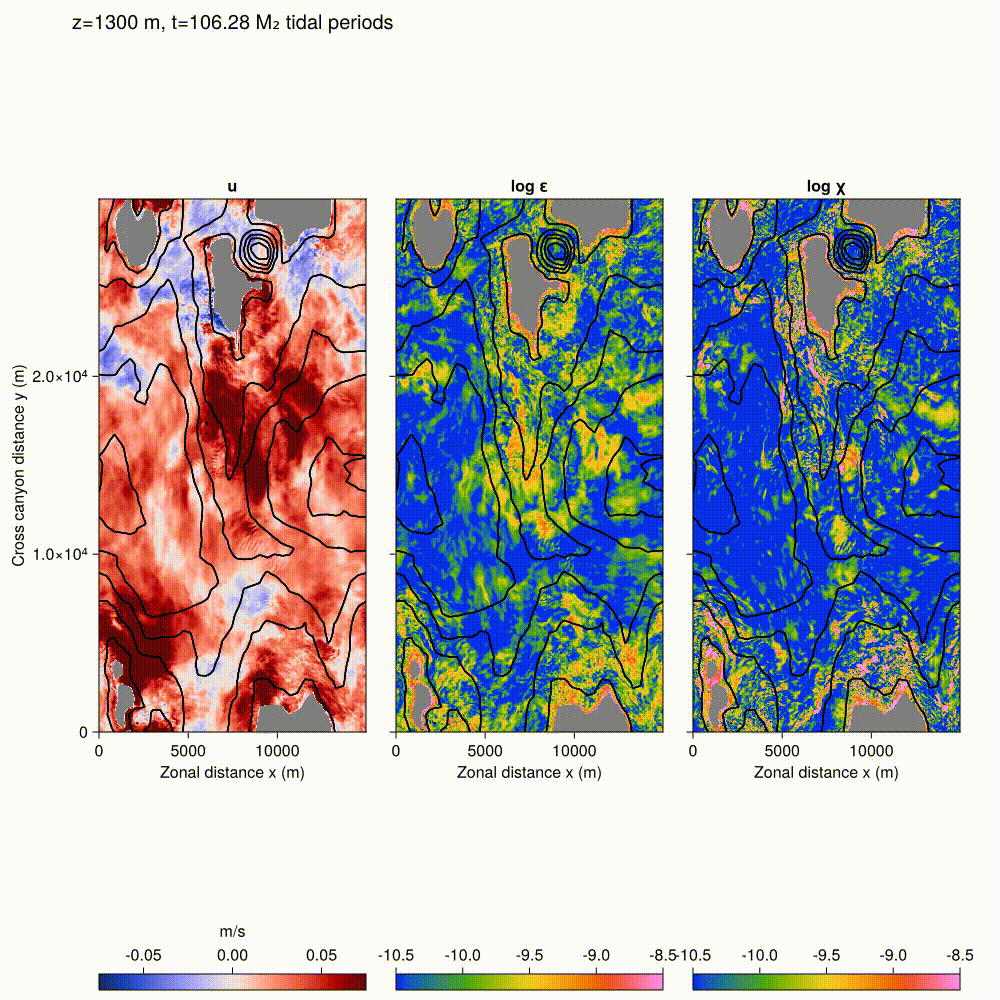Chih-Lun Liu
Postdoctoral Scholar
Department of Earth System Science, University of California, Irvine
Biography
I am a postdoctoral scholar in the Department of Earth System Science at University of California, Irvine. My research interests involve stratified shear instability’s role in ocean mixing. I am also interested in flow-topography interactions, such as internal tide-driven mixing at ocean bottom, island wakes and flow over ocean ridges. My research aims to address the questions, ‘how does turbulence occur in densely-stratified flows? How efficient does mixing occur to homogenize different layers of fluids? What are the effects of turbulent mixing on larger-scale processes?’ Using numerical simulations and theories, I aim to understand the complex dynamics of ocean mixing and its impact on the Earth systems.
I have completed my PhD at Oregon State University in 2023, working with Bill Smyth on Kelvin-Helmholtz turbulence in complex environments. Feel free to explore my projects and publications to learn more about my work and contributions to the field.
- Ocean Mixing
- Stratified Shear Flows
- Flow-topography Interactions
- Internal Waves
- Data Science
PhD in Earth, Ocean, Atmospheric Sciences, 2019-2023
Oregon State University (Advisor: [Bill Smyth](https://blogs.oregonstate.edu/salty/))
MSc in Physical Oceanography, 2015-2017
National Taiwan University (Advisor: [Ming-Huei Chang](https://minghueichang.wixsite.com/smallocean))
Experience
Understanding the primary steady energy pathway from barotropic tides to the internal wave continuum and the upslope mean flow generated from tidally-driven mixing in the bottom boundary layer.
Developing a parameterization method for spatial variation of internal wave breaking efficiency and irreversible mixing efficiency.
Strengthening Julia programming skills by contributing to Oceananigans.jl through source code debugging, developing a customized internal tide simulation (including postprocessing functions), and actively engaging with software developers.
Extensively utilized high-performance computing and optimized resource allocation.
Enhancing data analysis and visualization skills.
Participated in an intensive two-week program focused on cutting-edge theories and applications in fluid dynamics.
Enhanced technical, communication and collaboration skills through hands-on computational and laboratory experiments.
Built valuable professional connections by engaging with talented peers and leading experts.
Under the supervision of Bill Smyth and collaboration with Alexis Kaminski. Projects includes studying the impact on shear instability and turbulence under three conditions: (1) altering the initial random noise (butterfly effect), (2) when a stratified shear layer is near a solid boundary, and (3) when a stratified shear layer is close to another shear layer.
Enhanced analytical capabilities through the derivation of mathematical theories, improved numerical proficiency by customizing FORTRAN code, and refined coding skills through postprocessing and organizing DNS outputs using MATLAB.
Extensively utilized high-performance computing and optimized resource allocation.
Developed strong critical thinking and problem-solving abilities, alongside effective communication skills, by participating in conferences and publishing research in Journal of Fluid Mechanics.
Developed a 3D nested model using MITgcm to simulate oil spill pollution, improving predictive capabilities for environmental impact assessments and response strategies for the Central Weather Bureau, Taiwan.
Leveraged MATLAB programming skills and modeling skills to develop a 2D simulation analyzing interactions between the Kuroshio current and the I-Lan Ridge, east of Taiwan. This work collabrates with observational team in optimizing field data collection strategies and interpretation during an oceanic research cruise focused on measuring turbulence.
Delivered care to elderly residents in a nursing home.
Enhanced soft skills such as communication, adaptability, time management, and teamwork.
Collaborated with Ming-Huei Chang on advanced island wake modeling projects.
Conducted in-depth analysis of the Kuroshio current using numerical simulations and field observations, providing actionable insights into oceanographic dynamics.
Participated in research cruises to collect and analyze ocean hydrology and dynamics data, enhancing data-driven decision-making processes.






